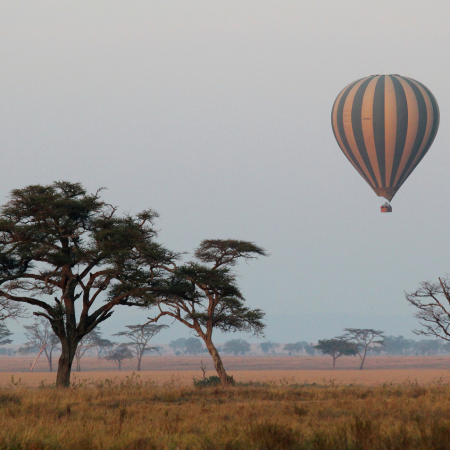
In the vast plains of Serengeti National Park, comprising 1.5 million hectares of savannah, the annual migration of two million wildebeests plus hundreds of thousands of gazelles and zebras – followed by their predators in their annual migration in search of pasture and water – is one of the most impressive nature spectacles in the world. The biological diversity of the park is very high with at least four globally threatened or endangered animal species: black rhinoceros, elephant, wild dog, and cheetah.
The Maasai people had been grazing their livestock in the open plains of eastern Mara Region, which they named “endless plains”, for around 200 years when the first European explorer, German Oscar Baumann, visited the area in 1892.The name “Serengeti” is an approximation of the word used by the Maasai to describe the area, siringet, which means “the place where the land runs on forever.
The park is usually described as divided into three regions:
Serengeti plains: the almost treeless grassland of the south is the most emblematic scenery of the park. This is where the wildebeest breed, as they remain in the plains from December to May. Other hoofed animals – zebra, gazelle, impala, hartebeest, topi, buffalo, waterbuck – also occur in huge numbers during the wet season. “Kopjes” are granite florations that are very common in the region, and they are great observation posts for predators, as well as a refuge for hyrax and pythons.
Western corridor: the black clay soil covers the swampy savannah of this region. The Grumeti River is home to Nile crocodiles, colobus monkeys, and martial eagles. The migration passes through from May to July.
Northern Serengeti: the landscape is dominated by open woodlands (predominantly Commiphora) and hills, ranging from Seronera in the south to the Mara River on the Kenyan border. Apart from the migratory wildebeest and zebra (which occur from July to August, and in November), the bushy savannah is the best place to find elephant, giraffe, and dik dik.
The Serengeti National Park is a protected area since 1940 and has obtained National park status in 1951 with extensive boundary modifications in 1959. It was included with the adjoining Maswa Game Reserve as part of Serengeti-Ngorongoro Biosphere Reserve in 1981 and accepted as part of a UNESCO World Heritage Site in 1981.
